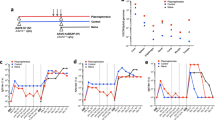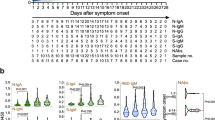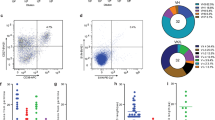Abstract
Recombinant adenoviruses are currently the most important vector system in gene therapy. Adenoviruses frequently cause upper respiratory tract infections in humans and anti-adenoviral antibodies are found in 35–70% of the population. Therefore in the majority of potential patients receiving adenoviral gene therapy, the contact of virus particles and blood will lead to the formation of antigen–antibody complexes. These complexes have the ability to induce inflammatory reactions via an activation of the complement system. We have determined the level of C3a (the most reactive complement component) generated in isolated citrate plasma of healthy individuals after challenge with recombinant and wild-type adenoviruses in amounts corresponding to virus blood levels to be expected in patients during adenoviral gene therapy. All plasma samples containing anti-adenoviral antibodies showed a substantial, dose-dependent generation of C3a. A virus plasma level of about 7.5 × 109 particles/ml (which was calculated to be the highest blood level reached during clinical trials in the past) induced an average release of about 3000 ng/ml C3a (baseline levels <140 ng/ml). Analyzing the nature of anti-adenoviral antibodies showed, that not only antibodies with neutralizing properties (anti-Ad5), but also non-neutralizing anti-adenoviral antibodies are capable of complement activation. This study suggests that complement activation can be ignored in local low-dose applications of recombinant adenoviruses, but warrants attention after systemic application of large viral quantities. In clinical protocols aiming at systemic virus application, measures for monitoring and controlling the complement system should be included on a regular basis.
This is a preview of subscription content, access via your institution
Access options
Subscribe to this journal
Receive 12 print issues and online access
$259.00 per year
only $21.58 per issue
Buy this article
- Purchase on Springer Link
- Instant access to full article PDF
Prices may be subject to local taxes which are calculated during checkout



Similar content being viewed by others
References
Batshaw ML et al. Recombinant adenovirus gene transfer in adults with partial ornithine transcarbamylase deficiency (OTCD) Hum Gene Ther 1999 10: 2419–2437
Batshaw ML et al. Recombinant adenovirus gene transfer in adults with partial ornithine transcarbamylase deficiency (OTCD)
Cooper NR . The classical complement pathway: activation and regulation of the first complement component Adv Immunol 1985 37: 151–216
Volankis JE, Frank MM . The Human Complement System in Health and Disease Marcel Dekker 1998
Chirmule N et al. Immune responses to adenovirus and adeno-associated virus in humans Gene Therapy 1999 6: 1574–1583
Piedra PA . Incidence and prevalence of neutralizing antibodies to the common adenoviruses in children with cystic fibrosis: implication for gene therapy with adenovirus vectors Pediatrics 1998 101: 1013–1019
Blatteis CM, Sehic E . Cytokines and fever Ann NY Acad Sci 1998 840: 608–618
Czermak BJ, Friedl HP, Ward PA . Complement, cytokines, and adhesion molecule expression in inflammatory reactions Proc Assoc Am Phys 1998 110: 306–312
Czermak BJ et al. In vitro and in vivo dependency of chemokine generation on C5a and TNF-alpha J Immunol 1999 162: 2321–2325
Frank MM, Frie LF . The role of complement in inflammation and phagocytosis Immunol Today 1991 12: 322–326
Schellenberg RR, Mullen JB, Foster A, Glovsky MM . Anaphylatoxin C3a peptide contracts human pulmonary vasculature Pulm Pharmacol 1998 1: 133–138
Tennenberg SD, Clardy CW, Bailey WW, Solomkin JS . Complement activation and lung permeability during cardiopulmonary bypass Ann Thorac Surg 1990 50: 597–601
Polley MJ, Nachman RL . Human platelet activation by C3a and C3a des-arg J Exp Med 1983 158: 603–615
Fosse E et al. Complement activation in injured patients occurs immediately and is dependent on the severity of the trauma Injury 1998 29: 509–514
Roumen RM et al. Inflammatory mediators in relation to the development of multiple organ failure in patients after severe blunt trauma Crit Care Med 1995 23: 474–480
Solomkin JS, Cotta LA, Satoh PS, Nelson RD . Complement activation and clearance in acute illness and injury: evidence for C5a as a cell-directed mediator of the adult respiratory distress syndrome in man Surgery 1985 97: 668–678
Yao YM, Redl H, Bahrami S, Schlag G . The inflammatory basis of trauma/shock-associated multiple organ failure Inflamm Res 1998 47: 201–210
Zilow G, Sturm JA, Rother U, Kirschfink M . Complement activation and the prognostic value of C3a in patients at risk of adult respiratory distress syndrome Clin Exp Immunol 1990 79: 151–157
Cichon G et al. Intravenous administration of recombinant adenoviruses causes thrombocytopenia anemia and erythroblastosis in rabbits J Gene Med 1999 1: 360–371
Habib NA, Hodgson HJ, Lemoine N, Pignatelli M . A phase I/II study of hepatic artery infusion with wtp53-CMV-Ad in metastatic malignant liver tumours Hum Gene Ther 1999 10: 2019–2034
Gama de Abreu M, Kirschfink M, Quintel M, Albrecht DM . White blood cell counts and plasma C3a have synergistic predictive value in patients at risk for acute respiratory distress syndrome Crit Care Med 1998 26: 1040–1048
Slotman GJ, Burchard KW, Yellin SA, Williams JJ . Prostaglandin and complement interaction in clinical acute respiratory failure Arch Surg 1986 121: 271–274
Dernek SB et al. The effects of methylprednisolone on complement, immunoglobulins and pulmonary neutrophil sequestration during cardiopulmonary bypass Cardiovasc Surg 1999 7: 414–418
Gott JP et al. Modifying risk for extracorporeal circulation: trial of four anti-inflammatory strategies Ann Thorac Surg 1998 66: 747–753
Giebler R, Schmidt U, Koch S, Scherer R . Combined antithrombin III and C1-esterase inhibitor treatment decreases intravascular fibrin deposition and attenuates cardiorespiratory impairment in rabbits exposed to Escherichia coli endotoxin Crit Care Med 1999 27: 597–604
Jansen PM . Effect of C1 inhibitor on inflammatory and physiologic response patterns in primates suffering from lethal septic shock J Immunol 1998 160: 475–484
Kirschfink M, Nurnberger W . C1 inhibitor in anti-inflammatory therapy: from animal experiment to clinical application Mol Immunol 1999 36: 225–232
McGrory WJ, Bautista DS, Graham FL . A simple technique for the rescue of early region I mutations into infectious human adenovirus type 5 Virology 1998 163: 614–617
Mittereder N, March KL, Trapnell BC . Evaluation of the concentration and bioactivity of adenovirus vectors for gene therapy J Virol 1996 70: 7498–7509
Burger R et al. The C terminus of the anaphylatoxin C3a generated upon complement activation represents a neoantigenic determinant with diagnostic potential J Immunol 1988 141: 553–558
Zilow G, Naser W, Rutz R, Burger R . Quantitation of the anaphylatoxin C3a in the presence of C3 by a novel sandwich ELISA using monoclonal antibody to a C3a neoepitope J Immunol Meth 1989 121: 261–268
Acknowledgements
This work was supported by the Bundesministerium für Forschung und Technologie (01KV9901/1). We are grateful for the technical assistance of Beate Goldbrich, Christel Uhse, Gudrun Kliem and Hannelore Scharfenorth. The authors would like to thank Friedrich Luft and Charles Coutelle for critical reading of the manuscript.
Author information
Authors and Affiliations
Rights and permissions
About this article
Cite this article
Cichon, G., Boeckh-Herwig, S., Schmidt, H. et al. Complement activation by recombinant adenoviruses. Gene Ther 8, 1794–1800 (2001). https://doi.org/10.1038/sj.gt.3301611
Received:
Accepted:
Published:
Issue Date:
DOI: https://doi.org/10.1038/sj.gt.3301611
Keywords
This article is cited by
-
Adenoviral vector with shield and adapter increases tumor specificity and escapes liver and immune control
Nature Communications (2018)
-
The relevance of coagulation factor X protection of adenoviruses in human sera
Gene Therapy (2016)
-
Coagulation factor X shields adenovirus type 5 from attack by natural antibodies and complement
Nature Medicine (2013)
-
An ex vivo loop system models the toxicity and efficacy of PEGylated and unmodified adenovirus serotype 5 in whole human blood
Gene Therapy (2010)
-
Pre-existing Immunity and Passive Immunity to Adenovirus 5 Prevents Toxicity Caused by an Oncolytic Adenovirus Vector in the Syrian Hamster Model
Molecular Therapy (2009)



